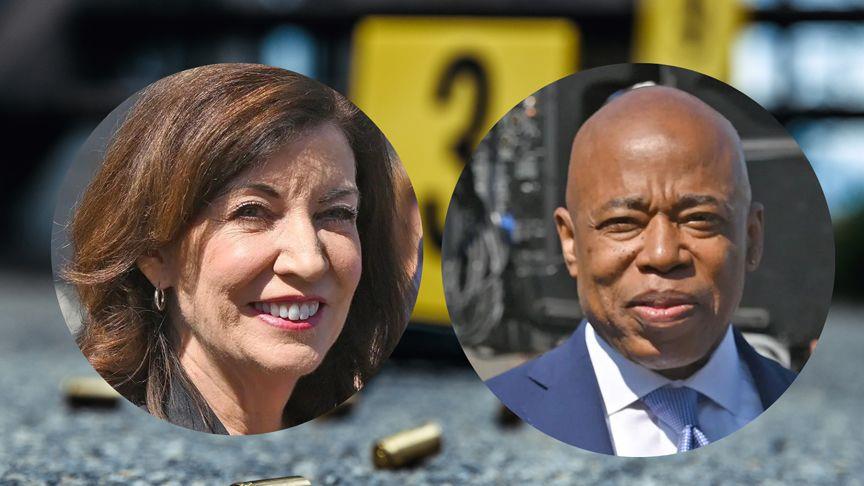Governor Kathy Hochul and NYC Mayor Eric Adams have unveiled their latest project – a hefty $485 million plan to combat gun violence. This announcement is indicative of their propensity to pour funds into societal problems instead of seeking to address their root causes. This approach aligns with a disturbing trend among New York's city and state officials, a tendency to prioritize flashy, big-ticket spending over strategic, cost-effective solutions.
Their initiative, charmingly dubbed "A Blueprint for Community Safety," was developed over 18 months by the Gun Violence Prevention Task Force, whose process purportedly integrated feedback from 1,500 residents and 800 children. The Task Force's funding distribution plan has earmarked large amounts for various objectives, including housing improvements and mental health resources. Yet, it largely sidesteps the pressing need for better law enforcement and stricter penalties for gun violence offenders.
Looking at the allocation details, it's hard not to question the judiciousness of their approach. A staggering $118.3 million will be funneled into early intervention programs, such as mentorship initiatives for young individuals. In comparison, a similarly large sum of $118.5 million will cater to employment and entrepreneurship programs. Conversely, a mere $2.6 million has been dedicated to enhancing relations between the police and the communities they serve. The glaring discrepancy between these allocations indicates that the city and state prioritize social programs over law enforcement, a vital component of community safety.
Equally noteworthy is the $106.66 million for trauma-informed care and mental health resources. While there is no denying that mental health plays a role in violence, assuming it is the key to resolving the deep-seated issue of gun violence oversimplifies the problem. It's akin to addressing the symptoms while ignoring the disease, failing to tackle the systemic roots of urban crime and violence.
 |
| Kathy Hochul & Eric Adams |
Moreover, historical evidence indicates that similar large-scale spending has not produced the desired results. Past efforts to curb gun violence through sizeable financial investments have often failed to yield tangible benefits. A case in point is the "Cure Violence" initiative launched in 2010 with a budget of $36 million. This program sought to prevent shootings in 17 neighborhoods by intervening in conflicts and offering job assistance. However, a subsequent study found no significant impact on shooting rates.
Despite the high price tag of these initiatives, they have consistently missed the mark. Critics argue that instead of providing a solution, these programs merely serve as band-aids, masking the unresolved real issues. The Adams and Hochul administrations are repeating this pattern of unproductive spending in the name of community safety.
Instead of developing a focused, strategic plan to tackle gun violence, the Adams and Hochul administrations appear to prioritize optics and progressive approval over effectiveness. To truly address gun violence, strong leadership is needed that acknowledges the complexities of the problem rather than relying on a scatter-shot funding approach in hopes that some solutions might stick. It seems that Adams and Hochul may have missed the target in their latest attempt to combat gun violence.
